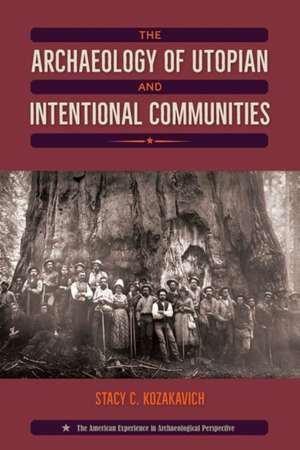The Archaeology of Utopian and Intentional Communities
Autor Stacy C Kozakavichen Limba Engleză Hardback – 5 dec 2017
Surveys of settlement patterns, the built environment, and even the smallest artifacts such as tobacco pipes and buttons are used to uncover what daily life was like in these communities. Archaeological evidence reveals how these communities upheld their societal ideals. Shakers, for example, constructed homes with separate living quarters for men and women, reflecting the group's commitment to celibacy. On the other hand, some communities diverged from their principles, as evidenced by the presence of a key and coins found at Kaweah, indicating private property and a cash economy despite claims to communal and egalitarian practices.
Stacy Kozakavich argues archaeology has much to offer in the reconstruction and interpretation of community pasts for the public. Material evidence provides information about these communities free from the underlying assumptions, positive or negative, that characterize past interpretations. She urges researchers not to dismiss these communal experiments as quaint failures but to question how the lifestyles of the people in these groups are interpreted for visitors today. She reminds us that there is inspiration to be found in the unique ways these intentional communities pursued radical social goals.
Preț: 475.57 lei
Preț vechi: 559.49 lei
-15% Nou
Puncte Express: 713
Preț estimativ în valută:
91.00€ • 95.25$ • 75.74£
91.00€ • 95.25$ • 75.74£
Carte tipărită la comandă
Livrare economică 31 martie-14 aprilie
Preluare comenzi: 021 569.72.76
Specificații
ISBN-13: 9780813056593
ISBN-10: 0813056594
Pagini: 298
Dimensiuni: 159 x 236 x 30 mm
Greutate: 0.55 kg
Editura: University Press of Florida
ISBN-10: 0813056594
Pagini: 298
Dimensiuni: 159 x 236 x 30 mm
Greutate: 0.55 kg
Editura: University Press of Florida
Descriere
Utopian and intentional communities have dotted the American landscape since the colonial era, yet only in recent decades have archaeologists begun analysing the material culture left behind by these groups. The case studies in this volume use archaeological evidence to reveal how these communities upheld their societal ideals - and how some diverged from them in everyday life.
